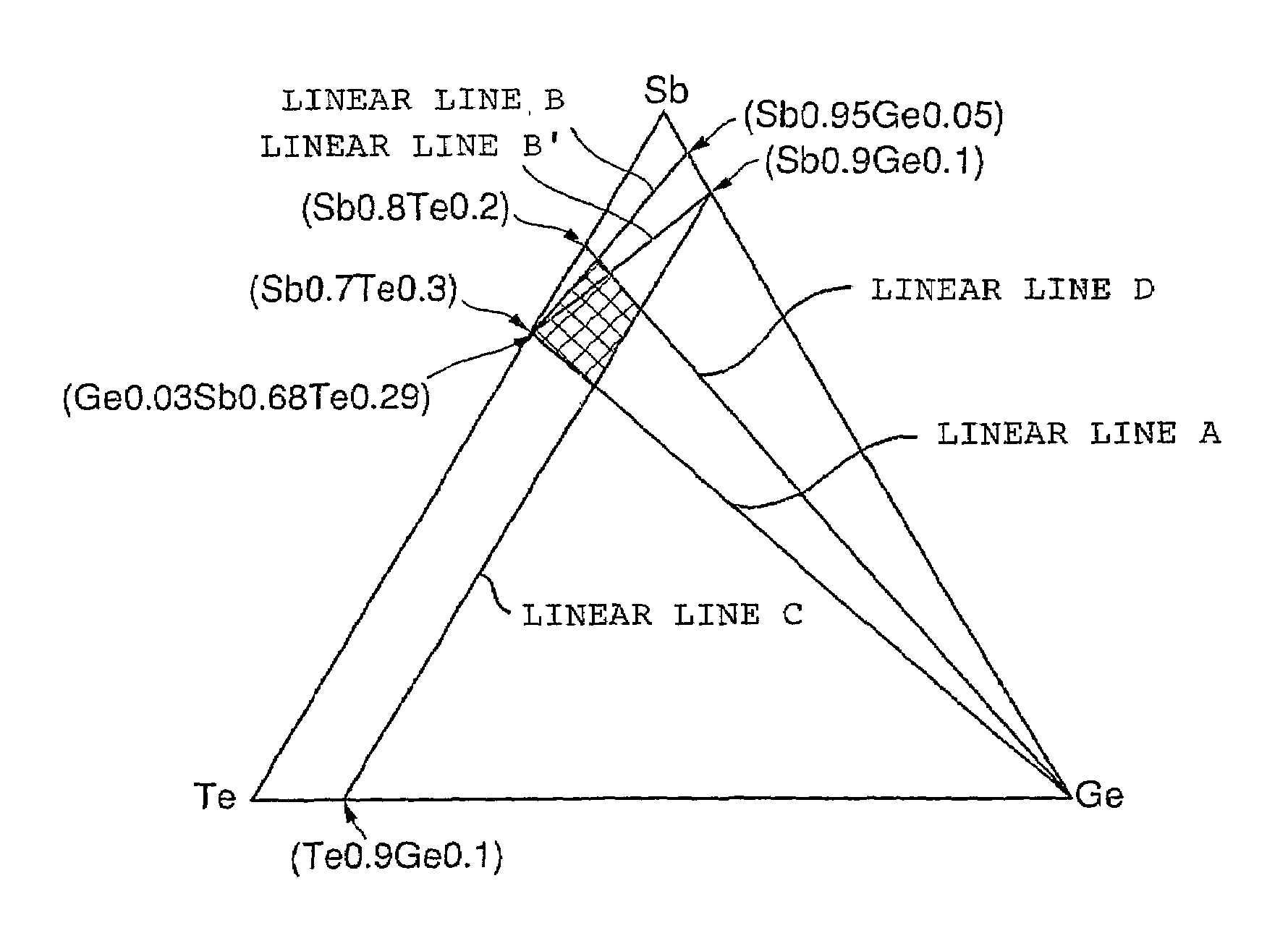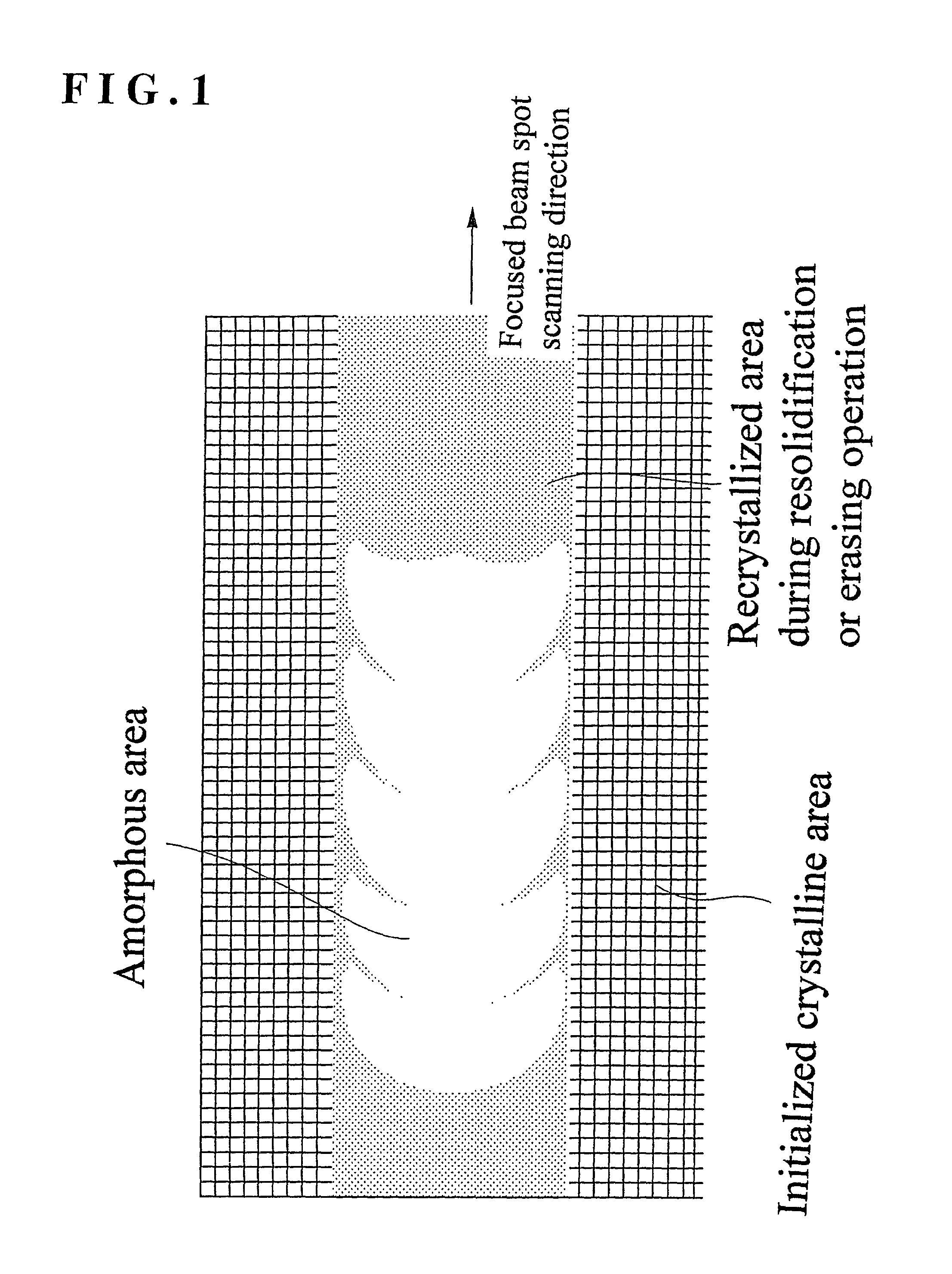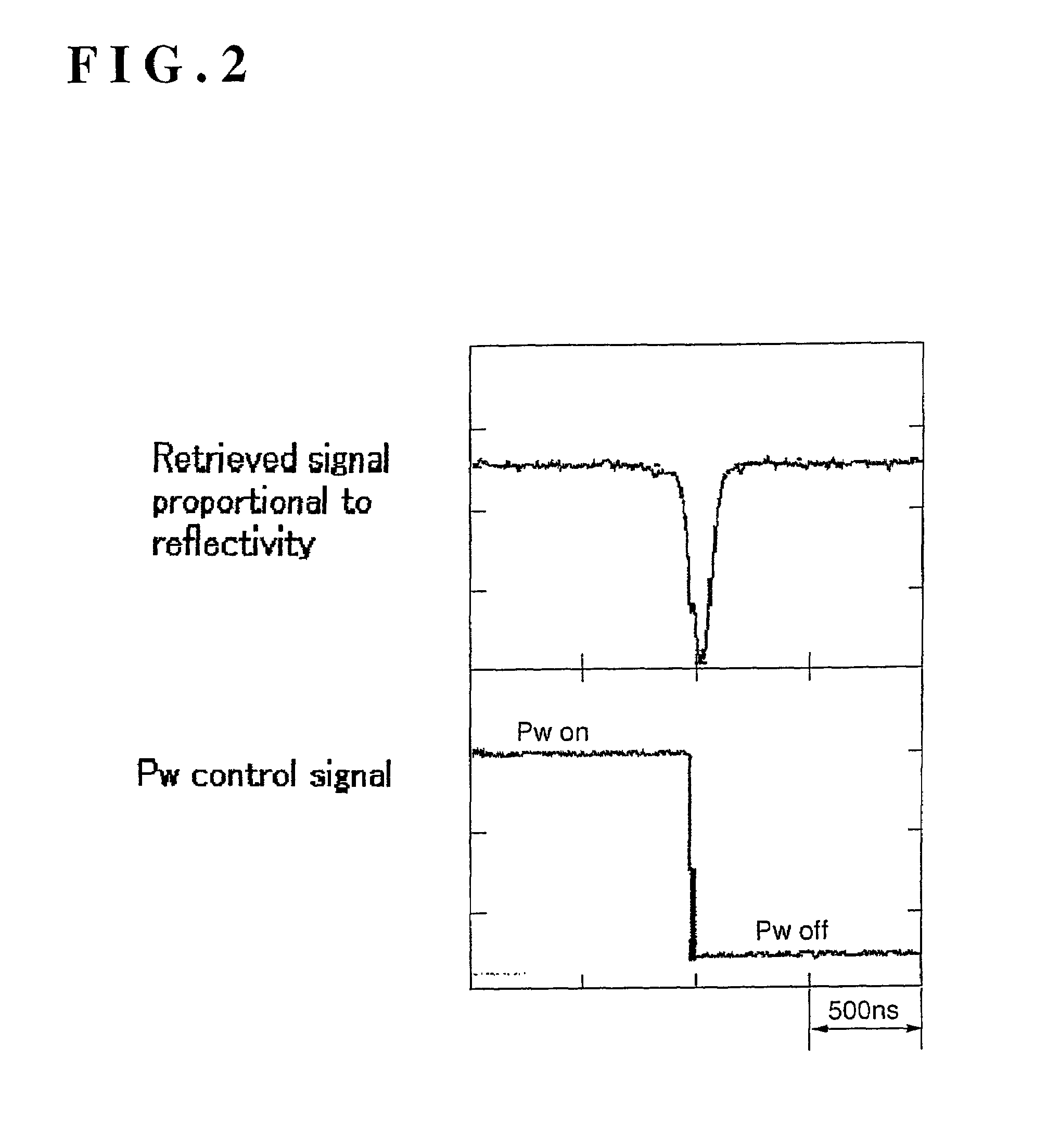Optical information recording medium and optical recording method
a technology of optical information and recording medium, which is applied in the field of optical information recording medium, can solve the problems of inability to obtain good retrieval characteristics in recording at a high linear velocity or in high density mark length modulation recording, and the likelihood of optical white noise generation
- Summary
- Abstract
- Description
- Claims
- Application Information
AI Technical Summary
Benefits of technology
Problems solved by technology
Method used
Image
Examples
example 2
[0518]On the substrate, a lower protective layer (ZnS)80(SiO2)20, a recording layer Ge0.05Sb0.73Te0.22, an upper protective layer (ZnS)80(SiO2)20 and a reflective layer Al0.995Ta0.005, were formed by changing the thicknesses of the respective layers variously. The thicknesses of the respective layers are shown in Table 1. All layers were prepared by a sputtering method without releasing vacuum.
[0519]The reflective layer was formed at a film-deposition rate of 1.3 nm / sec at a final vacuum pressure of not higher than 2×10−4 Pa under an Ar pressure of 0.54 Pa.
[0520]The volume resistivity was 55 nΩ·m, and the sheet resistivity was 0.28 Ω / □.
[0521]Impurities such as oxygen, nitrogen, etc., were below the detective level by X-ray-excited photoelectron spectrometry, and the sum of all impurities can be regarded as substantially less than 1 atomic %. The film density of the protective layer (ZnS)80(SiO2)20 was 3.50 g / cm3, which was 94% of the theoretical bulk density of 3.72 g / cm3. Further, ...
example 3
[0547]A medium was prepared with the same layer structure as in Example 2 except that the composition of the recording layer was changed to Ge0.05Sb0.71Te0.24. The thicknesses of the respective layers and the evaluation results are shown in Table 4. For the measurement, an optical system with NA=0.63 was used.
[0548]Like in Table 3, in the respective layer structures, α1, αc and βn-1 were optimized, and Pw and Pe were set so that jitter would become minimum, whereupon jitter was evaluated.
[0549]Like in Example 3(a), in Example 2(a1), good performance was obtained at the recording linear velocity of 1-time velocity and 2-times velocity. However, at 9 m / s, jitter was higher by from 1 to 2% than Example 2(a1).
[0550]Further, in Examples 3(a) to 3(f) wherein the upper protective layer thickness was 30 nm, jitter of less than 10% was obtained, and even after 100 times of overwriting, jitter was less than 13%. In Examples 3(g) to 3(i) wherein the upper protective layer thickness was as thic...
example 4
[0551]The layer structure was such that a lower protective layer (ZnS)80(SiO2)20 was 215 nm in thickness, a recording layer Ge0.05Sb0.69Te0.26 was 18 nm, an upper protective layer (ZnS)80 (SiO2)20 was 18 nm, and a reflective layer Al0.995Ta0.005 was 200 nm. The composition of the recording layer was one whereby good characteristics were obtainable by recording at a linear velocity of from 3 to 5 m / s and was one for so-called 1-time velocity. However, the amount of excess Sb is slightly smaller than Examples 1 and 2, and it is therefore excellent in archival life and is preferred when an emphasis is placed on the storage stability of recorded information or the durability against deterioration by repetitive retrieving, i.e. durability against retrieving laser beam.
[0552]The following evaluation was carried out by an optical system with NA=0.6. Determination of the optimum pulse-dividing method was carried out as follows. At a recording linear velocity of 3.5 m / s, Pw=13 mW and Pe / Pw=0...
PUM
| Property | Measurement | Unit |
|---|---|---|
| length | aaaaa | aaaaa |
| length | aaaaa | aaaaa |
| volume resistivity | aaaaa | aaaaa |
Abstract
Description
Claims
Application Information
 Login to View More
Login to View More - R&D
- Intellectual Property
- Life Sciences
- Materials
- Tech Scout
- Unparalleled Data Quality
- Higher Quality Content
- 60% Fewer Hallucinations
Browse by: Latest US Patents, China's latest patents, Technical Efficacy Thesaurus, Application Domain, Technology Topic, Popular Technical Reports.
© 2025 PatSnap. All rights reserved.Legal|Privacy policy|Modern Slavery Act Transparency Statement|Sitemap|About US| Contact US: help@patsnap.com



